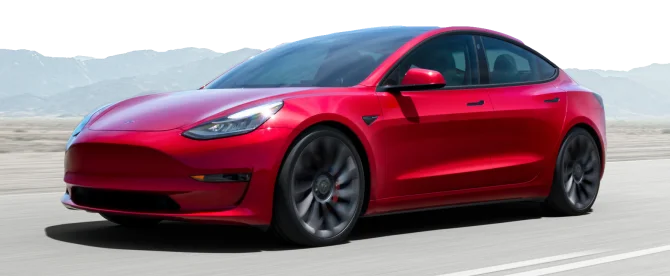Auto Warranty Cost vs. Car Repair Bills: Breaking Down the Numbers for 2025

There’s no escape from cars being more expensive to own. According to the Federal Reserve, the average cost for vehicle maintenance and repair has increased by almost 40% since March 2020. This figure doesn’t account for the prospect of tariffs impacting foreign-made car parts. Last year, nearly $88 billion in foreign car parts and accessories were imported to the U.S. Meanwhile, ConsumerAffairs estimates that the typical car owner spends about $900 yearly to keep the vehicle on the road. In short, it’s not cheap to stay behind the wheel.
Keep reading as we explore what these numbers add up to in 2025. We’ll examine the repair and maintenance expenses that car owners are likely to face, while covering whether extended auto warranty costs can help with the unpredictable nature of owning a vehicle no longer protected by a factory auto warranty.
Average Car Repair Costs in 2025
Recent data from Kelley Blue Book (KBB) reveals that the typical repair visit is accompanied by a mechanic’s bill of $838. To put that amount into perspective, CNBC reported that auto repair bills rose by 20% in 2023 alone compared to a year earlier. Much of the increase can be attributed to pandemic-related supply chain issues, but prices haven’t subsided despite manufacturing levels returning to normal.
Bankrate uncovered further insights into car ownership by highlighting the hidden associated costs, which total $6,684, in a recent analysis. Vehicle maintenance costs are inevitable and can add up. Consider these common upkeep requirements (based on ConsumerAffairs and other data):
- Oil changes: $35-$125
- Tire rotation: $60-$70
- Basic inspection: $200
- Brake pad replacement: $300-$600 per axle
- Tire replacement (set of four): $400-$1,200
So, just getting the oil changed and tires rotated twice a year requires an outlay of $200 to $400. Add a periodic brake job or tire replacement, and the ongoing costs rise dramatically.
Most Common Costly Repairs and Their Price Tags
Beyond essential maintenance expenses, savvy car owners need to consider that a breakdown is an ever-present possibility, which is why so many seek extended warranty protection. It’s worth mentioning that modern car repair often involves component replacement, except for major systems like the engine and transmission. Yet, sometimes, the most efficient repair for these powertrain components also involves installing a new (or rebuilt or remanufactured) unit.
Here’s a look at some of the more likely car repairs and what they cost, according to RepairPal and KBB data:
| Component | Average Replacement Cost |
| Engine | $6,861–$7,357 |
| Transmission | $5,193–$9,143 |
| Turbocharger Assembly | $2,102–$2,474 |
| Rack and Pinion Assembly (Steering) | $1,846–$2,176 |
| Air Conditioner Compressor | $1,555–$1,993 |
| Fuel Pump | $1,148–$1,336 |
| Engine Control Module | $1,030–$1,102 |
| Anti-lock Brake System Module | $1,025–$1,579 |
| Control Arm (Suspension) | $677–$758 |
| Brake Caliper | $491–$830 |
These are averages, which can vary significantly by vehicle. For example, replacing the rack and pinion assembly in a Toyota Camry costs $1,953 to $2,527, while the same work in a BMW 530i skyrockets to $4,057 to $5,163.
Plus, some cars are more dependable than others. ConsumerAffairs points out that the Toyota 2GR-FE engine (V6 used in the Camry, Avalon, and other models) can last 250,000 miles with only oil changes. While others, like the infamous Hyundai/Kia Theta II engine, are notorious for reliability issues.
Repair costs are ultimately impacted by not only the repair but also by what you drive.
What Does an Extended Auto Warranty Cost in 2025?
Most extended car warranty providers offer different coverage options with pricing that’s impacted by several factors:
| Vehicle Age and Mileage | Newer vehicles are less prone to breakdowns. So, they are less costly to protect than older, high-mileage cars. |
| Vehicle Make and Model | Premium brands typically command higher premiums due to more expensive replacement parts and specialized labor requirements. In addition, some vehicles are well-known for having specific reliability issues. |
| Coverage Level | Coverage starts with a powertrain plan that protects the engine, transmission, and drive axles. Mid-tier options add safeguards for major systems (like the steering and air conditioning). There are also comprehensive programs that have the least number of exclusions and come close to factory coverage. |
| Deductible Amount | Most extended warranty companies offer a choice of deductible (usually ranging from $0 to $500), which affects plan pricing. The higher the deductible, the lower the premium. |
| Provider | Each warranty company sets its own pricing. Purchasing an extended warranty (also called an auto protection plan or vehicle service contract) through a direct provider versus a third party (like a dealership) can be cheaper for equivalent coverage. |
While pricing varies significantly on these factors, ConsumerAffairs compiled the average cost of the two main types of extended warranty protection. Here’s a breakdown.
| Coverage Type | Covered Components | Average Cost |
| Powertrain | Engine, transmission, and drive axles. Specified component coverage with options for mid-tier protection for the electrical system, brakes, steering, suspension, air conditioning, and other systems. | $600 to $750 per year |
| Comprehensive (Bumper-to-Bumper) | Protection most similar to the manufacturer’s warranty that accompanies a new car. Least number of exclusions. | $1,000 per year |
Comparing a Warranty Plan to Annual Repair Expenses
Let’s take a real-world approach to assessing the value of an extended warranty. Using the least reliable vehicles, according to CarComplaints.com (some of these may surprise you), let’s compare repair cost scenarios. Service work is based on the highest estimate from RepairPal for two repairs over three years.
These calculations also assume a three-year comprehensive extended warranty reflecting the ConsumerAffairs cost estimate ($1,000 per year).
| Vehicle | Repair #1: Engine Head Gasket | Repair #2: Powertrain Control Module Replacement | Repair Totals | Extended Warranty Cost | Savings With Extended Warranty |
| 2019 Toyota RAV4 | $4,863 | $1,123 | $5,986 | $3,000 | $2,986 |
| 2013 Nissan Altima | $3,198 | $1,589 | $4,787 | $3,000 | $1,787 |
| 2014 Jeep Grand Cherokee | $2,212 | $872 | $3,084 | $3,000 | $84 |
| 2007 Toyota Camry | $2,854 | $1,104 | $3,958 | $3,000 | $958 |
| 2014 Ford Escape | $2,370 | $933 | $3,303 | $3,000 | $303 |
For most of these scenarios, the cost savings of having an extended warranty are evident. In particular, an owner of a 2019 Toyota RAV4 needing these repairs could save about half versus not having any warranty protection. Admittedly, the 2014 Jeep Grand Cherokee faces a break-even situation. However, none of these scenarios address a significant repair involving replacing the engine or transmission, with repair costs that start at $5,000 and can quickly rise.
How Extended Warranties Offset Unexpected Expenses
Beyond pure numbers, extended warranty coverage provides several key benefits:
- Budget Predictably: Rather than deal with surprise repair bills that can wreck your budget, a fixed upfront or monthly premium makes for more predictable financial planning in case of a breakdown.
- Inflation Protection: Extended warranty plan holders are locked in for coverage costs regardless of how expensive car repairs get. They don’t have to worry about inflation or tariffs.
- Value-Added Services: In addition to protecting against car trouble, many extended warranty or auto protection plan providers, including Endurance Warranty, offer valuable perks like rental car reimbursement, 24/7 roadside assistance with towing support, and trip interruption protection.
- Repair Facility Flexibility: Customer-focused warranty providers allow customers to choose their repair facility for covered repairs. For instance, Endurance customers can select any licensed repair center, including dealer service departments and specialized shops.
Long-Term Value: Is a Warranty Worth It for Older Cars?
We’ll be upfront that considering an extended warranty for an older vehicle requires careful and thorough thought. Part of the decision involves one inescapable fact: component failure likelihood increases with a vehicle’s age. But it’s reasonable to wonder if such protection makes sense. And there are some instances where it doesn’t. For example, a 20-year-old car with 200,000 miles wouldn’t be a good candidate because coverage, if available, could cost more than the car is worth.
The choice becomes more critical for middle-aged vehicles (7-15 years old), as this is when original components can start to fail. Sometimes this is due to age, other times it involves mileage (or a combination of both). The challenge is that there’s no expiration date on critical car components. One engine can last 20 years and 200,000 miles, while another may not reach ten years and 100,000 miles. The same applies to the transmission and just about every primary system you depend on for a reliable ride.
In addition, some car owners don’t want to drive one mile without the benefit of some type of warranty protection. These drivers are the first to sign up for an extended warranty when their factory warranty expires, regardless of the vehicle’s age.
You’re the only one who can determine if an extended warranty is right for your needs. Try these steps to help with the decision process:
- Research average repair costs for your specific vehicle (RepairPal and KBB are excellent resources)
- Assess your vehicle’s condition and maintenance history (Are you on a first-name basis with your mechanic, or do you just stop in for oil changes and regular maintenance?)
- Factor in how long you plan on keeping the car (longer-term ownership is ideal for extended warranty coverage)
- Address the affordability factor (Can you afford a $1,000 repair without an extended warranty? What about service work that costs thousands more?)
- Plan around a car with an unknown repair history (Perhaps you’ve purchased a used car with no idea about its service background)
What’s Typically Included in a Vehicle Service Contract or Extended Warranty
While some providers only offer a few vehicle service contracts, Endurance has an extensive range of options, or you can customize your own coverage. Drivers can select from stated component coverage, which features targeted protection of specific critical components. Endurance also offers exclusionary coverage that safeguards most systems except those specified in the contract.
Endurance Stated Component Plans
- Secure: Affordable powertrain protection that covers core systems like the engine, transmission, and drive axles.
- Secure Plus: Coverage that goes beyond the powertrain with safeguards for major components such as the brakes, air conditioning, steering, and core electrical system.
- Superior: Endurance’s high level of stated component protection with expanded coverage for the electrical, cooling, and fuel systems, as well as the suspension.
- Select Premier: A wallet-friendly program for high-mileage cars (up to 150,000 miles) that covers the powertrain, electrical system, air conditioning, cooling system, fuel system, and premium electric parts (like power window motors or electronic door lock actuators).
- Advantage: A unique plan that combines stated component coverage with up to $3,500 in maintenance support.
Endurance Exclusionary Plans
- Supreme: This comprehensive program safeguards most vehicle components except for contract-defined exclusions. It offers protection most similar to the manufacturer warranty that accompanies a new car.
- Supreme for Highline: The innovative plan brings the benefits of exclusionary protection to select luxury models.
Endurance also offers additional coverage tailored for modified automobiles, high-mileage cars, and commercial-use vehicles.
What Warranty Customers Are Typically Paying vs. Saving
Sometimes, the best way to describe Endurance coverage is through its customers. Here are some recent experience highlights from actual plan holders.
| Issue | Repair Cost | Customer Feedback |
| Defective Wastegate Actuator | $1,400+ | “Endurance covered it. It’s great to know that the coverage is extensive enough to cover parts that I’ve never heard of.” -Kyndell |
| Coolant Leak | $1,500+ | “The shop did all the work. All I had to pay was my deductible. Endurance has proven to be a great company and someone that I know I can trust.” -Michael |
| Faulty Wheel Bearing and Wheel Speed Sensor | $1,000+ | “Yet again, Endurance was there to save my day.” -Jason |
These are just a few examples. Endurance has paid hundreds of millions in claims since 2012, helping drivers cover the cost of expensive repair bills and get back on the road quickly and confidently.
Making the Decision That’s Right for Your Vehicle
With car repair costs on a steady upward climb, more and more car owners are turning to Endurance for peace of mind and protection against breakdowns and surprise repair bills.
Learn all the advantages of an Endurance auto protection plan by requesting a FREE email quote. You can also see your price and plan recommendations right away. Additionally, plan advisors are available by phone at (800) 253-8203.
Visit the Endurance blog for a vast library of articles covering car maintenance, warranty advice, DIY tips, vehicle reviews, and more.













Dave is an automotive journalist combining a deep passion for cars, hands-on mechanical experience, and dealership insight. His writing primarily focuses on consumer auto advice and enthusiast pieces. A regular contributor to SlashGear.com and other leading automotive platforms, Dave earned his BA in Journalism from The George Washington University.